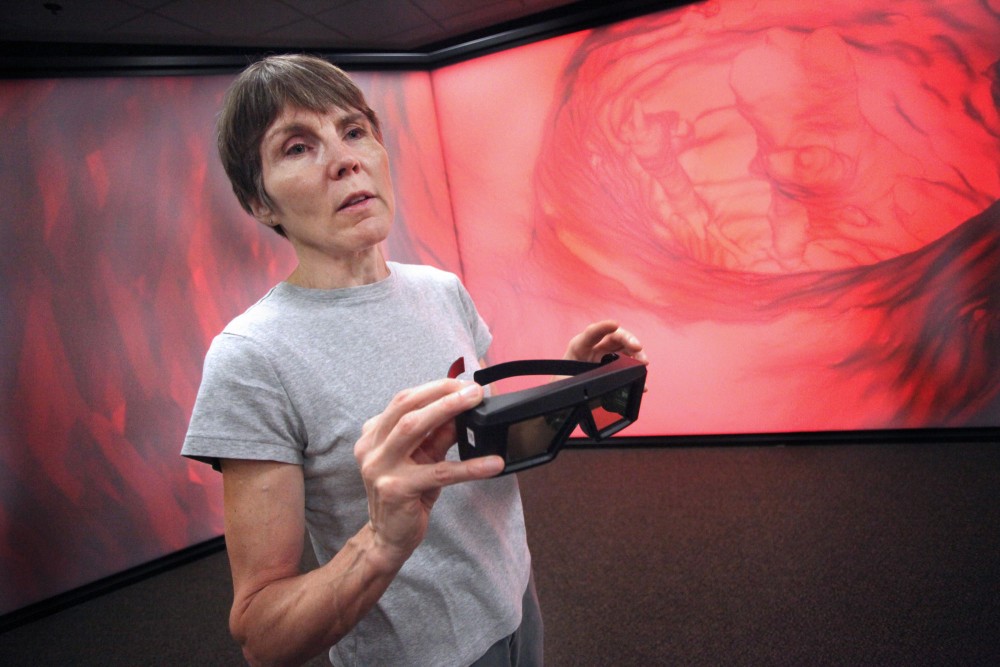Three expansive monitors displayed a blurry multicolored image, but upon donning a pair of special goggles it transformed into an interactive human heart pulsing with simulated blood. An ultrasonic tracking system on the ceiling detected the userâÄôs movements and shifted the image.
âÄúThis is virtual reality,âÄù said Nancy Rowe, a consultant with the Minnesota Supercomputing Institute at the University of Minnesota.
The 3-D virtual reality laboratory in Walter Library visualizes complex data for the UniversityâÄôs researchers and students. But after recent funding cuts itâÄôs now looking to lease the lab to commercial clients like medical researchers, physicists and businesses making medical devices to fill the gap.
MSI began promoting the lease last week, but has yet to secure any business, said Pratik Jagtap, a consultant at the institute.
The technology powering the laboratory could be used for âÄúvirtually anything,âÄù Rowe said, and had been used to study laser fusion, medical research, astrophysics and even acoustics in ancient Greek buildings.
Jagtap said the laboratory was originally designed for the UniversityâÄôs researchers and their academic partners. Most of the equipment, worth roughly $500,000, was donated, Rowe said.
Jagtap said MSI is not leasing the laboratory for profit, but to fill gaps left after the University cut the instituteâÄôs funding.
Commercial clients would have no time or use limits for the laboratory, Jagtap said, and would probably rent it for a few hours a day.
He hopes to make âÄúoptimal useâÄù of the facility by balancing business from commercial clients with the needs of the University researchers and classes using the equipment. The University researchers will get priority for the laboratoryâÄôs use, he said.
Astronomy professor Paul Woodward helped build the laboratory in 1995 with National Science Foundation research grants to visualize the massive calculations he worked with. He said although only a small group of researchers uses the laboratory, the facilityâÄôs importance should not be determined by how many people use it.
Similar commercial attempts at other laboratories resulted in âÄúa lot of industrial secrecyâÄù as clients restricted access to their research, Woodward said.
âÄúWe hope [the leasing is] done in a way that doesnâÄôt conflict with open research,âÄù he said.
Aside from research studies, Rowe said classes were often held at the laboratory during the school year, allowing students to delve more deeply into the subjects they were studying. Based on what heâÄôs seen before,
Woodward is concerned that an increase in users may decrease access for researchers.
Assistant professor Dan Keefe, who used the lab to run heart simulations, said collaboration with private industry was valuable, and that the lab itself was a partnership between different institutes across the University.
But he said as some commercial clients would likely use the laboratory for private work, there should be a separate space for such projects. Right now, all simulations are kept to one room.











